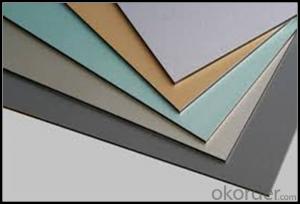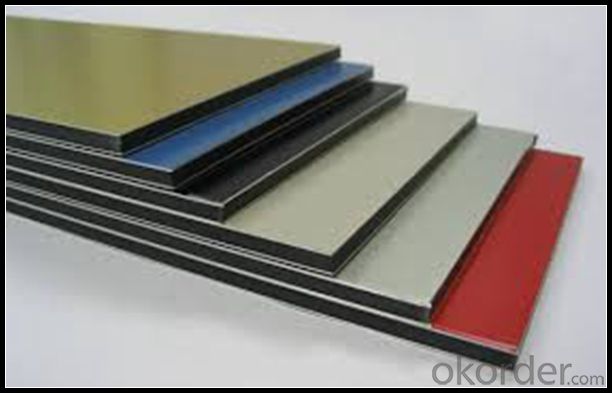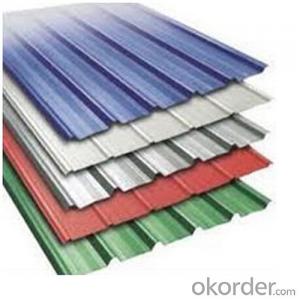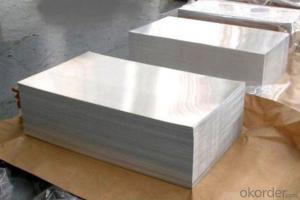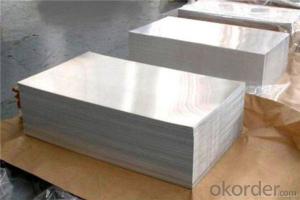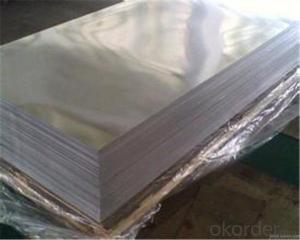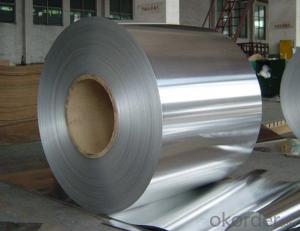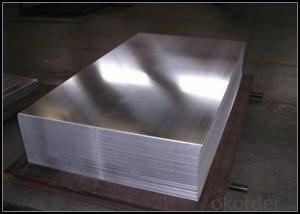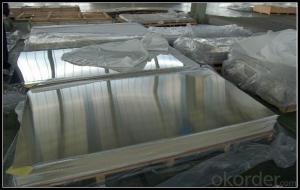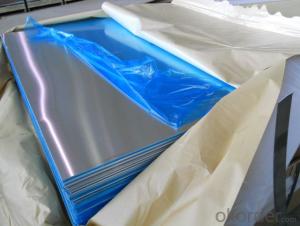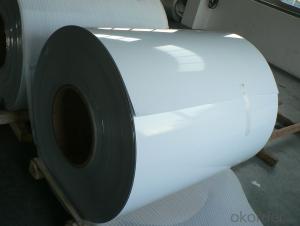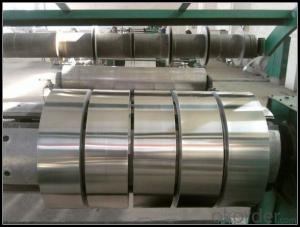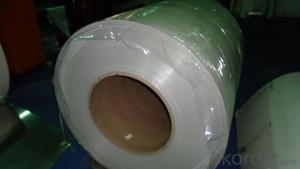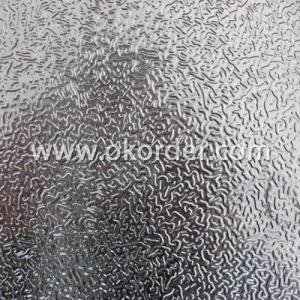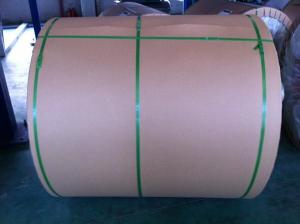Aluminum Tread Plate Sheets for Curtain Wall System
- Loading Port:
- Shanghai
- Payment Terms:
- TT OR LC
- Min Order Qty:
- 5 m.t.
- Supply Capability:
- 100000 m.t./month
OKorder Service Pledge
OKorder Financial Service
You Might Also Like
Specification
1.Structure of Aluminium Composite Panel for Curtain Wall System
Aluminum Sheets are strengthened and cut from raw materials with different alloys, such as AA5005, AA5052, etc. They are easy for processing in different shapes, good in intensity and can be quickly installed. Aluminium Sheets for Energy Saving Curtain Walls are good in energy saving, weather resistance, fire resistance, easy for maintenance and with many colors.
Aluminium Sheets for Energy Saving Curtain Walls are widely used in construction of metal walls, metal ceilings, car decoration, advertizing panels, etc.
2.Main Features of Aluminium Composite Panel for Curtain Wall System
•High intensity
•Easy to be processed and shaped
•Weather resistance
•Anti-pollution & environment protection
3. Aluminium Composite Panel for Curtain Wall System Images
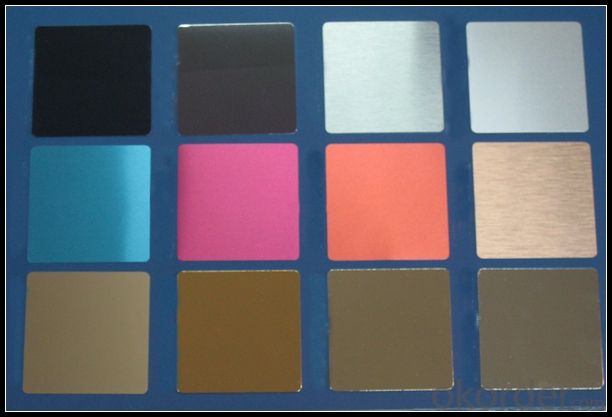
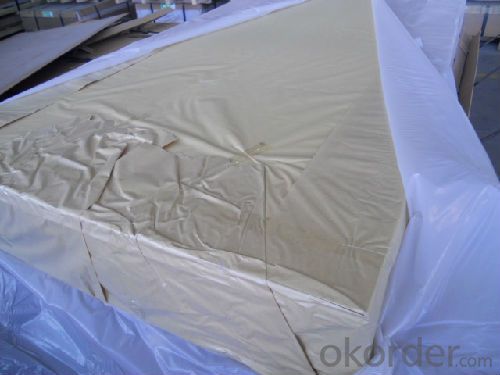
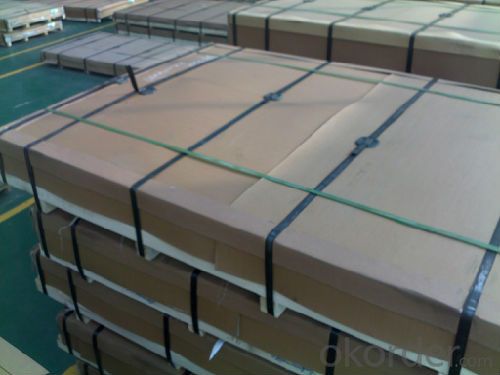
4.Specification of Aluminium Composite Panel for Curtain Wall System
Alloy Number | AA5XXX |
Temper | H12, H14, H16, H18, H22, H24, H26, H32, HO, F |
Thickness | 0.1mm – 500mm |
Width | 10mm- 2200mm |
Standard | GB/T3880-2006, ASTM, ISO, EU standard |
5.FAQ
A.What about inspections to guarantee quality?
For each order for Aluminum Sheets with Mill Finished Surface AA5XXX, we will arrange strict inspection for raw materials, inspection during production and inspection for finished goods.
With requirement of customers, we also can arrange the third party inspection.
B.What about delivery?
We will put order for Aluminum Sheets with Mill Finished Surface AA5XXX in production schedule after order gets confirmed against copy of TT or L/C. Normally it takes about one month for production. Exact shipment schedule is different based on different sizes and quantity.
C.What is the MOQ?
5 tons for each size.
D. Where have you exported aluminium sheets?
We have exported aluminum sheets to many countries. Main markets include South East Asia, Middle East, North America, South America, etc.
- Q: Can aluminum sheets be used for furniture manufacturing?
- Yes, aluminum sheets can be used for furniture manufacturing. Aluminum is a versatile material with several advantageous properties that make it suitable for furniture production. It is lightweight, durable, corrosion-resistant, and can be easily molded into various shapes and sizes. Additionally, aluminum has a sleek and modern aesthetic, making it a popular choice for contemporary furniture designs. Aluminum sheets can be used to create frames, legs, and other structural components for different types of furniture, including chairs, tables, shelves, and cabinets. The versatility and durability of aluminum make it a viable option for furniture manufacturing, especially for outdoor or industrial furniture that requires resistance to harsh weather conditions or heavy use.
- Q: How does the thickness of aluminum sheet affect its formability?
- The thickness of an aluminum sheet has a significant impact on its formability. Generally, thinner sheets of aluminum are more malleable and easier to shape compared to thicker sheets. This is because thinner sheets have lower resistance to deformation and require less force to bend or stretch. Thicker aluminum sheets, on the other hand, have higher resistance to deformation and are less malleable. They require more force and energy to shape, and may be more prone to cracking or tearing during forming processes. Thicker sheets also have a higher likelihood of experiencing springback, where the material partially returns to its original shape after being formed. The formability of aluminum sheets is also influenced by the alloy composition and the specific forming process being used. In some cases, certain alloy compositions or heat treatments can enhance the formability of thicker sheets, making them easier to shape. In summary, the thickness of an aluminum sheet directly affects its formability. Thinner sheets are generally more malleable and easier to shape, while thicker sheets require more force and are less malleable. The alloy composition and specific forming processes being used can also impact the formability of aluminum sheets.
- Q: What's the maximum size of 3 mm thick aluminum sheet?
- See tolerance taggingIf there is no tolerance, see the accuracy level of the workpiece and check the tolerance listA 3-4 mm deviation is acceptable if the magnitude is not noted and is of no importanceThat is, the 3.5mm is OK, if the lower accuracy is generally 2.95
- Q: Would you please tell me what putty to use on the aluminium board, what kind of putty, and the painting process?
- Applied atomic ash.Consider adding an interface agent, that is, applying an interfacial agent on the aluminum plate, and then applying a topcoat on the interface agent after drying.
- Q: This question asks whether it is possible to utilize stamped or embossed aluminum sheets for a specific project.
- <p>Yes, you can use stamped or embossed aluminum sheets in your project. These sheets are known for their strength, durability, and lightweight properties, making them ideal for various applications such as construction, automotive, and aerospace. Stamped aluminum sheets are formed by pressing the material into a specific shape, while embossed sheets have a raised pattern. Both types offer design flexibility and can be customized to meet specific project requirements. Ensure that the aluminum sheets you select meet the necessary specifications for your project, such as thickness, strength, and finish.</p>
- Q: Are aluminum sheets suitable for aerospace fuel tanks?
- Aerospace fuel tanks can indeed utilize aluminum sheets. In the aerospace industry, aluminum is widely employed because of its lightweight yet robust characteristics. Its strength-to-weight ratio is commendable, rendering it an ideal choice for fuel tanks that must endure the forces of flight while minimizing the aircraft's overall weight. Moreover, aluminum's resistance to corrosion is pivotal for aerospace fuel tanks, considering their exposure to diverse fuels and environmental conditions. Furthermore, aluminum's ease of fabrication and widespread availability make it a cost-efficient option for aerospace applications. In summary, aluminum sheets are a fitting material for aerospace fuel tanks due to their strength, lightweight nature, corrosion resistance, and cost-effectiveness.
- Q: 4.0mm five bars, aluminum plate, 4 aluminum plate, one ton, how many square?
- The price is calculated according to the price of aluminum ingot + processing fees (aluminum state), the specific price according to the size of the aluminum plate, zero shear and the whole board price also has the difference, Jiangsu Yi Heng Liu Guangxi Henan Mingtai aluminum has the.
- Q: I am doing some exam review and do not know how to do these...Calculate the number of Nitrate ions in 3.99 g or aluminum nitrate.
- ? number of NO3 = 3.99g AlNO3 x(1mol AlNO3/212.996 g AlNO3)x(1mol NO3/1mol AlNO3)x(6.02*10^23 number of NO3/1mol NO3)=11*10^21 number of NO3
- Q: What are the different bending techniques for aluminum sheets?
- There are several bending techniques that can be used for aluminum sheets. Some of the most commonly used techniques include: 1. Air bending: In this technique, a punch is used to apply force on the sheet, which causes it to bend along a straight line. The bend angle is determined by the amount of force applied. 2. Bottom bending: This technique involves clamping the sheet between a bottom tool and a die, while a punch is used to apply force on the sheet from the top. The sheet is bent around the die, resulting in a precise and consistent bend angle. 3. Coining: Coining is a technique in which the sheet is bent using a punch and a die, but with significantly higher force applied compared to other bending techniques. This creates a crisp and sharp bend with minimal springback. 4. Rotary bending: In rotary bending, the sheet is bent around a rotating bending roll. The roll exerts pressure on the sheet, causing it to bend gradually and smoothly. 5. Roll bending: This technique involves passing the aluminum sheet through a series of rollers, which gradually bend the sheet to the desired shape. It is often used for bending large sheets or for creating cylindrical shapes. 6. Press braking: Press braking is a versatile technique that uses a press brake machine to bend the sheet. The machine consists of a punch, a die, and a back gauge, which allows for precise and repeatable bends. Each bending technique has its own advantages and limitations, and the choice of technique depends on factors such as the desired bend angle, the thickness of the sheet, and the overall shape of the final product. It is important to carefully select the appropriate bending technique to ensure the desired result and avoid any defects or damage to the aluminum sheet.
- Q: what's the difference between aluminum sheet detergent and central air-condition detergent?
- Central air condition cleaning includes air-cooled condenser cleaning and water-cooling condenser cleaning, if it’s air-cooled condenser cleaning, you can use aluminum sheet detergent.
Send your message to us
Aluminum Tread Plate Sheets for Curtain Wall System
- Loading Port:
- Shanghai
- Payment Terms:
- TT OR LC
- Min Order Qty:
- 5 m.t.
- Supply Capability:
- 100000 m.t./month
OKorder Service Pledge
OKorder Financial Service
Similar products
Hot products
Hot Searches
Related keywords
